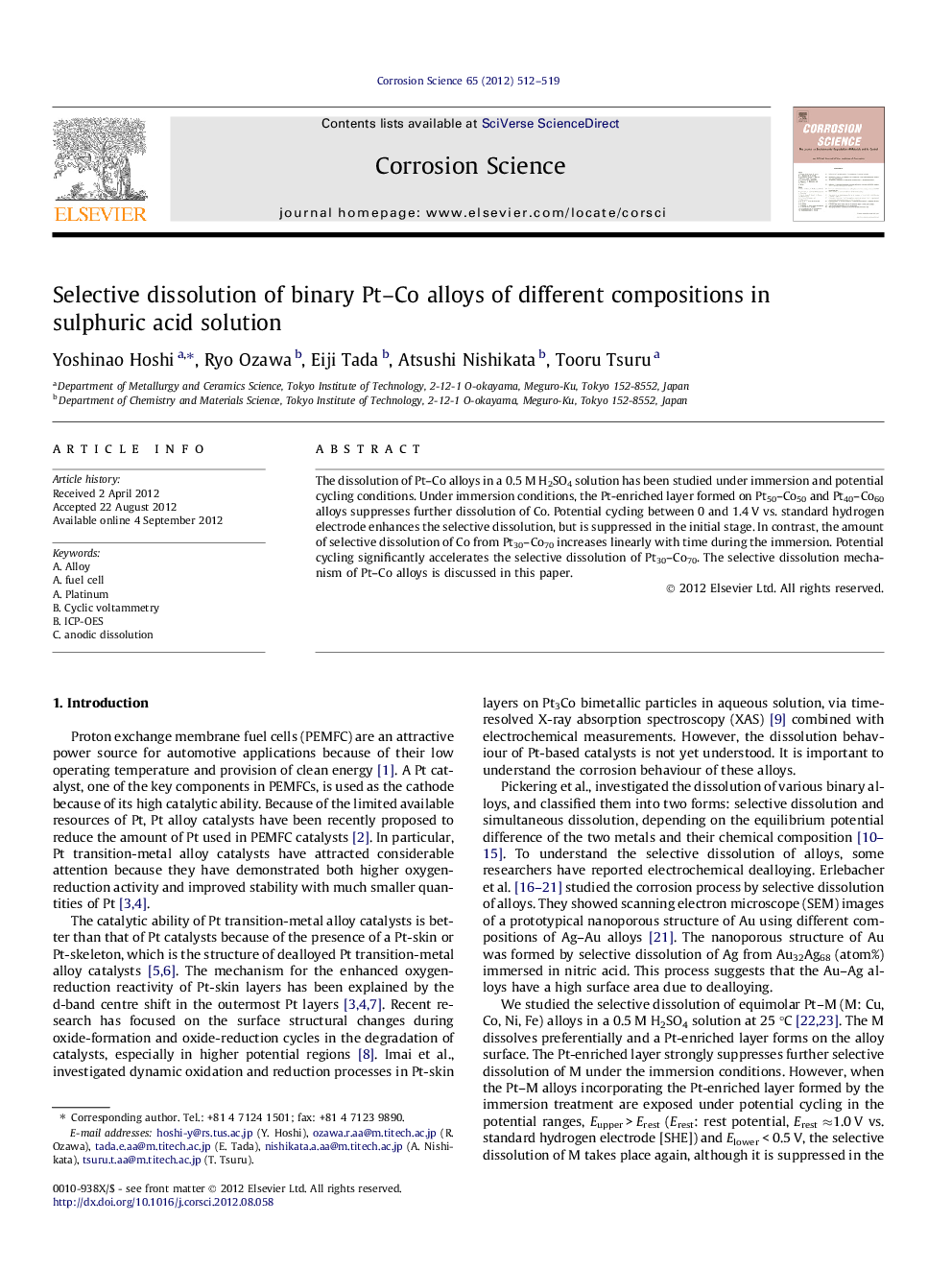| Article ID | Journal | Published Year | Pages | File Type |
|---|---|---|---|---|
| 1469515 | Corrosion Science | 2012 | 8 Pages |
The dissolution of Pt–Co alloys in a 0.5 M H2SO4 solution has been studied under immersion and potential cycling conditions. Under immersion conditions, the Pt-enriched layer formed on Pt50–Co50 and Pt40–Co60 alloys suppresses further dissolution of Co. Potential cycling between 0 and 1.4 V vs. standard hydrogen electrode enhances the selective dissolution, but is suppressed in the initial stage. In contrast, the amount of selective dissolution of Co from Pt30–Co70 increases linearly with time during the immersion. Potential cycling significantly accelerates the selective dissolution of Pt30–Co70. The selective dissolution mechanism of Pt–Co alloys is discussed in this paper.
► The Pt-enriched layer is formed on the surface of the Pt–Co alloys due to selective dissolution of Co. ► The selective dissolution of Co from Pt30–Co70 increases linearly with time. ► The selective dissolution of Co from Pt–Co alloys is enhanced by potential cycling. ► The amount of dissolved ions from Pt–Co alloys was determined with ICP-MS.
